In this post, we’re going to take a look at a selection of Pitcher Water Filters that Remove Lead and see how well they perform Based on Certified Lab Results.
The results I’m going to look at are from independent lab studies for each brand or water filter. Links to the results of these lab results were on each manufacturer’s website.
Based on EPA certified Lab testing results, the best Pitcher water filters that remove lead are Aquagear, Seychelle, Crystal Quest and Brita.
I’ll provide the links that I’ve found in this post and you can go view those yourself if you’re interested in looking at them.
milligrams per liter (mg/L)
“A measure of the concentration by weight of a substance per unit volume in water or wastewater. In reporting the results of water and wastewater analysis, mg/L is preferred to the unit parts per million (ppm), to which it is approximately equivalent.” – Sacramento State Water Programs
Visit my page where I review these Pitcher Water Filters.
Standardize the units of the Lab results
Below is a chart of six different pitcher filters that have been lab tested. The links to the results of these tests have been posted on each manufacturers’ website.
Some of the figures in the lab charts are shown as mg/L, or (milligrams per liter of water). This is a preferred standard unit of measure for measuring contaminants in water.
The figures from the lab that tested the Seychelle Filter were shown in µg/L (micrograms per liter of water). I’ve converted the µg/L measurements to mg/L in my chart to make it easier to make a comparison.
Note: mg/L can be thought of as PPM (parts per million). The conversion is not exact, but it is extremely close that the two units are used interchangeably.
The figures from the lab that tested the Brita Filter, displayed the results in ppb (parts per billion). I’ve converted the ppb measurements to mg/L in my chart to make it easier to make a comparison.
Chart of Combined Data from Lab Results of Multiple Filters
| Filter Brand | Lead Measurement Before Filtration | Lab Measurement After Filtration | % of Reduction |
|---|---|---|---|
| Aquagear | 0.046 mg/L | Not detectable using lab equipment | >99 % (greater than) |
| Seychelle | 0.200 mg/L | <0.005 mg/L (less than) | >97.50 % |
| Crystal Quest | ? | Not detectable above minimum detection level of 0.002 mg/L | ? |
| Brita | 0.15 mg/L | Not detectable above a minimum detection level | >99.6 % |
| Zero Water | ? | ? | 99 % |
What We Can Determine from this Chart
Let’s go over this chart I put together (above). Based on the information from those five lab reports. As you can tell, they didn’t all use the same source water. Because the contamination levels of lead are different for the test of each filter, it’ll make it difficult to make a good comparison as to which one filter does the best job at reducing lead levels.
We can only look at the available information and make an educated guess when determining the most capable filter.
Each Lab used a fresh new filter from each brand. The labs only assessed each filters ability to initially reduce the amount of lead from the source water used. They did not measure how well the filters performed after a determined amount of water was put through each filter, therefore we do not know how the filters perform over time.
AQUAGEAR – The source water starts out with lead level at 0.046 mg/L and is not detectable using their lab equipment after they collected the filtered water. This is a calculated reduction of greater than than 99%. Not bad.
Link to Lead Test for Aquagear pitcher filter.
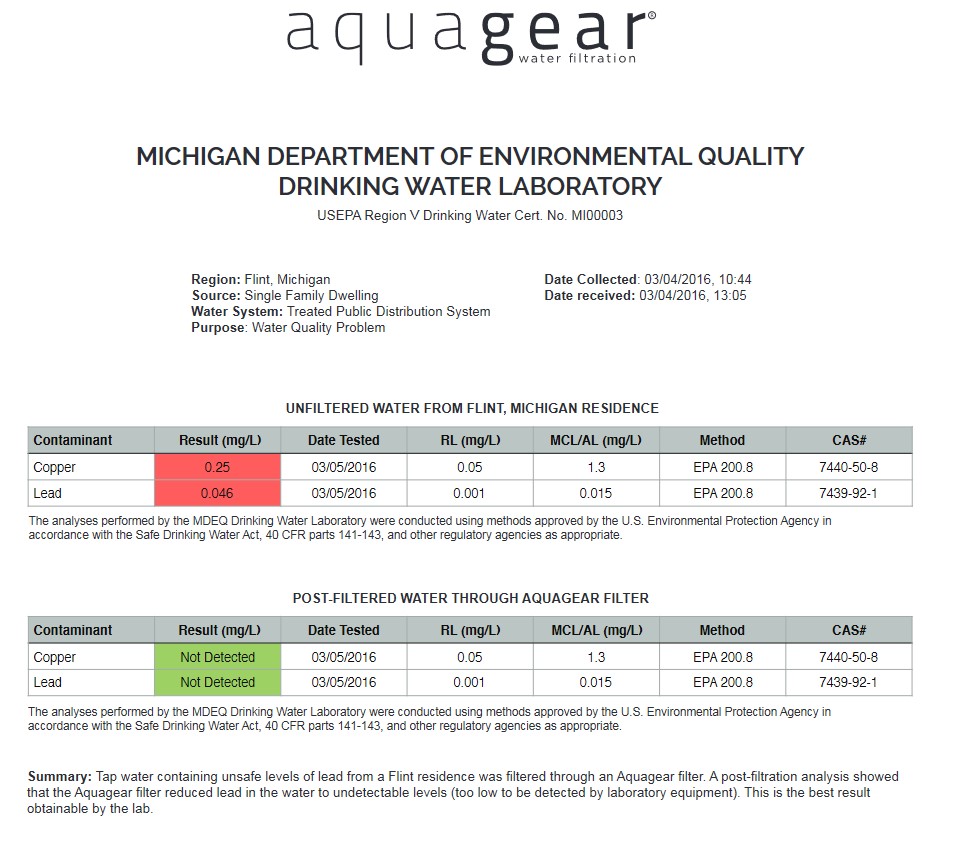
SEYCHELLE – The source water starts out at 0.200 mg/L of lead. After filtration, the measurement is less than 0.005 mg/L, a drop of more than 97.5%. Not as good as Aquagear, but remember, the source water started out significantly more contaminated than Aquagear’s source water.
Link to Seychelle Pitcher Filter Test
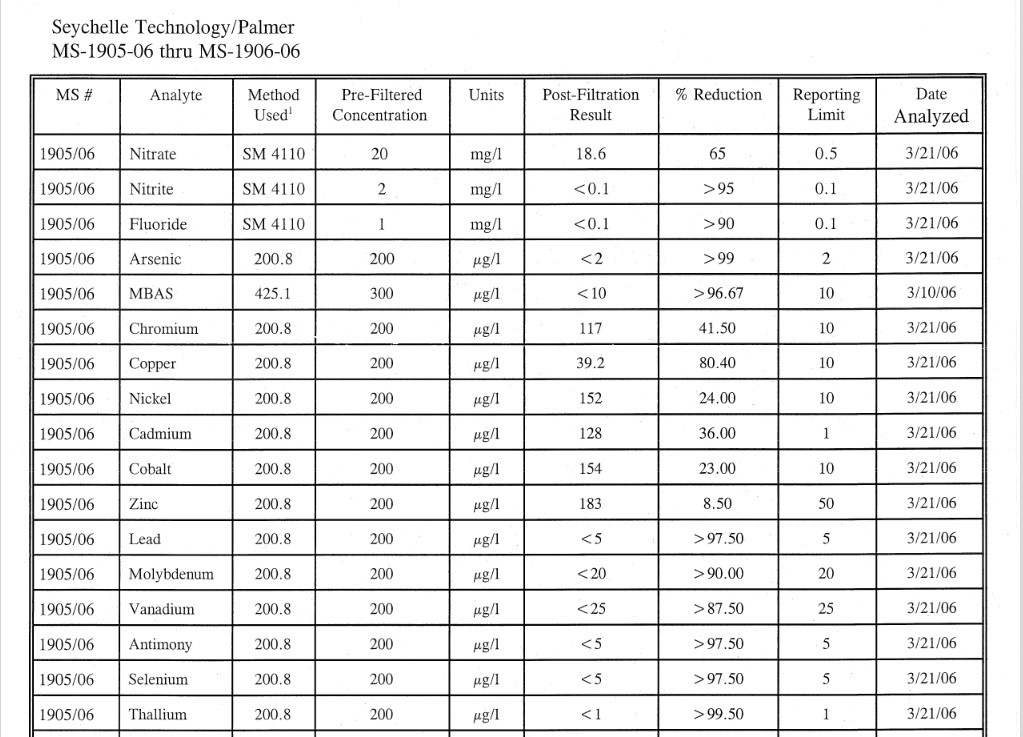
CRYSTAL QUEST – The lab result did not report the lead contamination level of of the source water used, and they did not offer a calculated reduction of it either. They only offer that after filtration, they could not detect any lead above their ability to measure it, which is 0.002 mg/L. This doesn’t mean this filter is any less effective than the others, it just means the lab didn’t give us numbers that we might be able to use to form our own opinion.
Crystal Quest Pitcher Lab Test Data
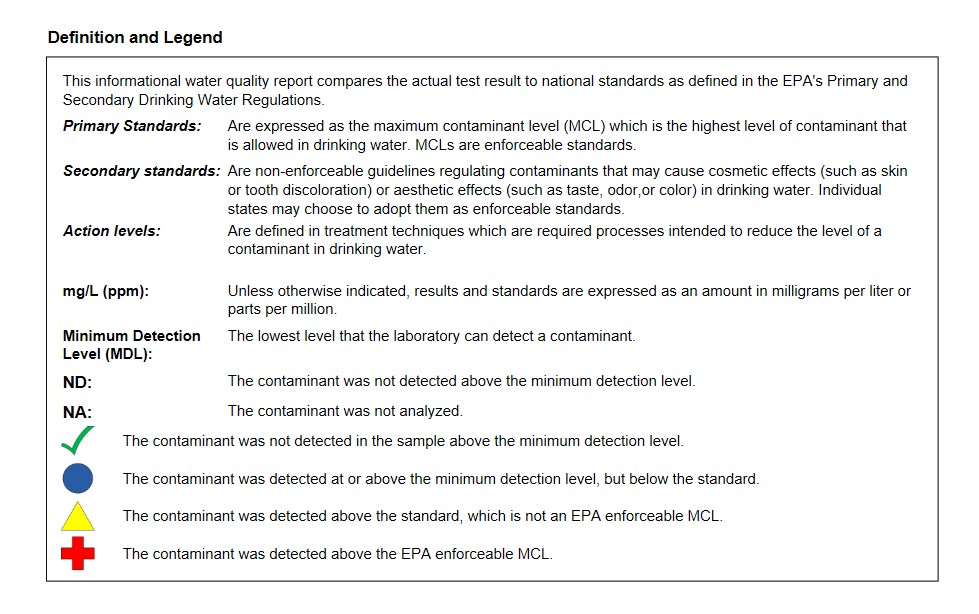
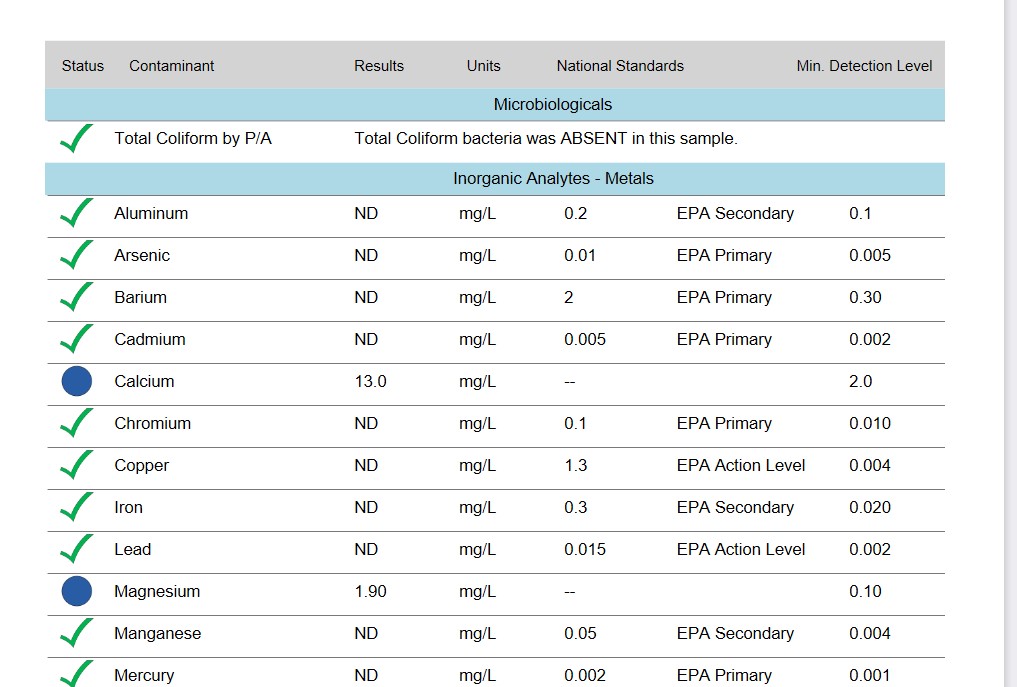
The filter that was used for Crystal Quest was not their Pitcher Filter. The lab results shown are from Crystal Quest’s larger cartridge that’s used in their countertop and under-sink systems.
The only difference about their Standard pitcher filter is that it’s smaller in size. It uses the exact same, highly-effective, filter media of their larger filters and has the same capabilities.
BRITA – At 0.15 mg/L, the source water used is also significantly more contaminated with lead than the source water used to test Aquagear’s filter. This isn’t to say that Aquagear’s filter is any less capable, it just means that it wasn’t tested to the same conditions. The end result of the Brita lab test noted the lead levels of the filtered water was below their equipment’s ability to measure it.
Brita Longlast Filter Lab Results
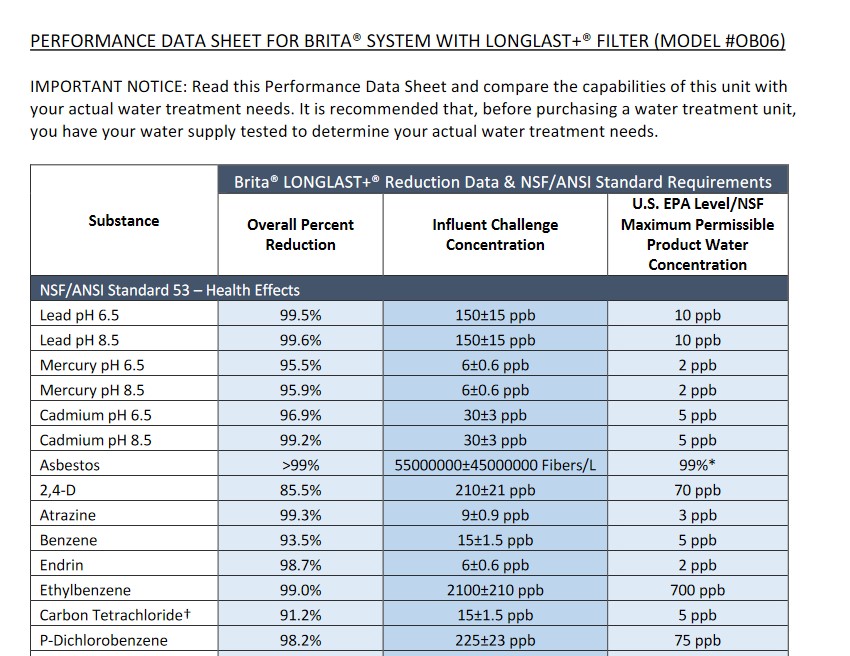
Visit my page where I review these Pitcher Water Filters.
ZERO WATER – The lab report didn’t mention the lead content of the source water used in their test, nor did they provide the level of lead contamination in the filtered water. The lab only reports that they calculated a 99% reduction in the amount of lead originally detected in the source water. It doesn’t give us much to go on.
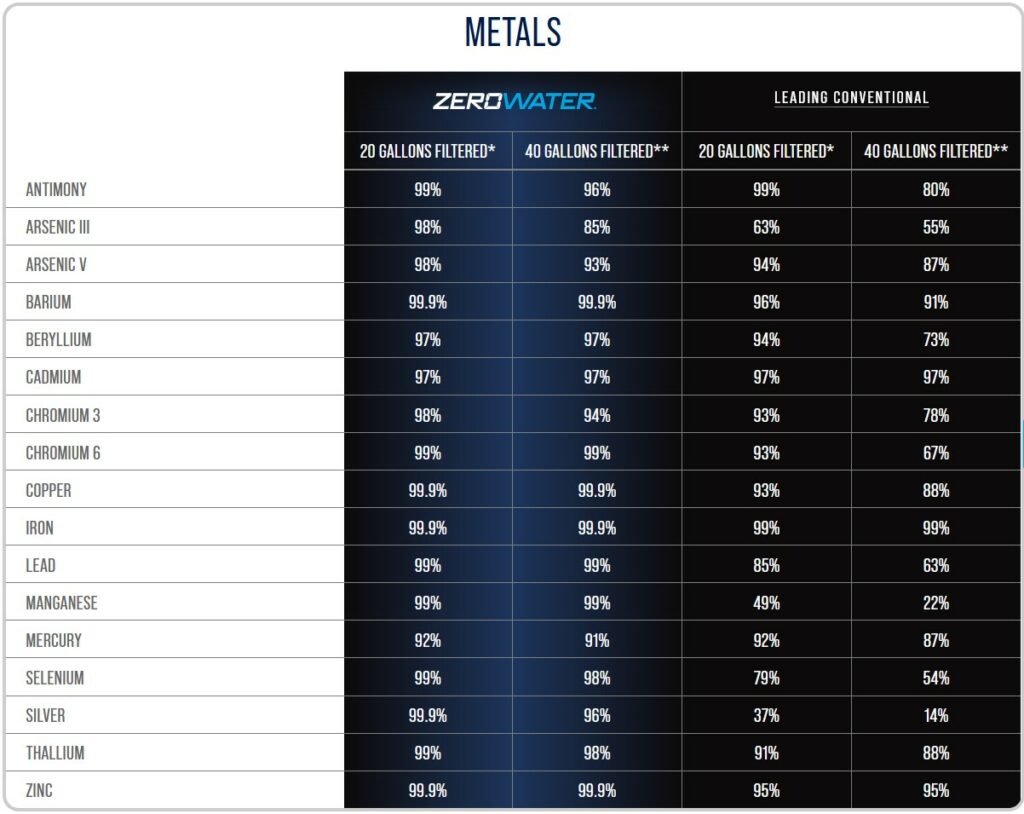
EPA Approved Testing Methods
Note: All laboratory tests, for all the brands of filters were conducted by independent laboratories, using methods approved by the U.S. Environmental Protection Agency or variations of these EPA methods.
A Better Way to Compare Filters
The only way to make an accurate study to compare the effectiveness of the filters to each other is to send a fresh filter of each brand to only one certified lab.
Have that one lab record the contamination level of the source water for lead, or for multiple contaminants before filtering. Have the lab flow the same amount of water through each filter, an measure the contaminant levels of the filtered water at, let’s say, every 200 gallons, up to 2000 gallons.
This would provide a very accurate and fully comparable data chart that could be used to compare the filters abilities to one another.
Visit my page where I review these Pitcher Water Filters.
The Health Effects of Lead Exposure
Lead (Pb) is a heavy metal that is a major environmental and health hazard. It is rarely found directly in source water, but can enter drinking water via corrosion in pipes. Water is the main exposure point in old buildings with lead pipes and old fixtures.
In the United States, homes that were built before 1980’s are more likely to have pipes and faucet fixtures that were sealed with leaded solder. Even newer homes are at risk, as lead regulations prohibiting usage of lead-based compounds in faucets only took effect in 2014. Before that date, faucet piping may have been sealed using up to 8 percent lead solder and still allowed to be called “lead-free”.
Exposure to LEAD causes a variety of adverse health effects, such as damage to the kidneys, nervous system and reproductive system. Exposure to LEAD is especially harmful to the developing brains and the other tissues of fetuses and young children.
The EPA has a lot more information on LEAD in drinking water.
My Thoughts on the Data of these Filters
From all my research and readings, I’ve come to the conclusion that a fresh filter of any of these brands are very capable at greatly reducing LEAD, as well as many other contaminants from the source water.
My recommendation would be to change a used filter at least as often as the manufacturer recommends, and probably more frequently than that.
